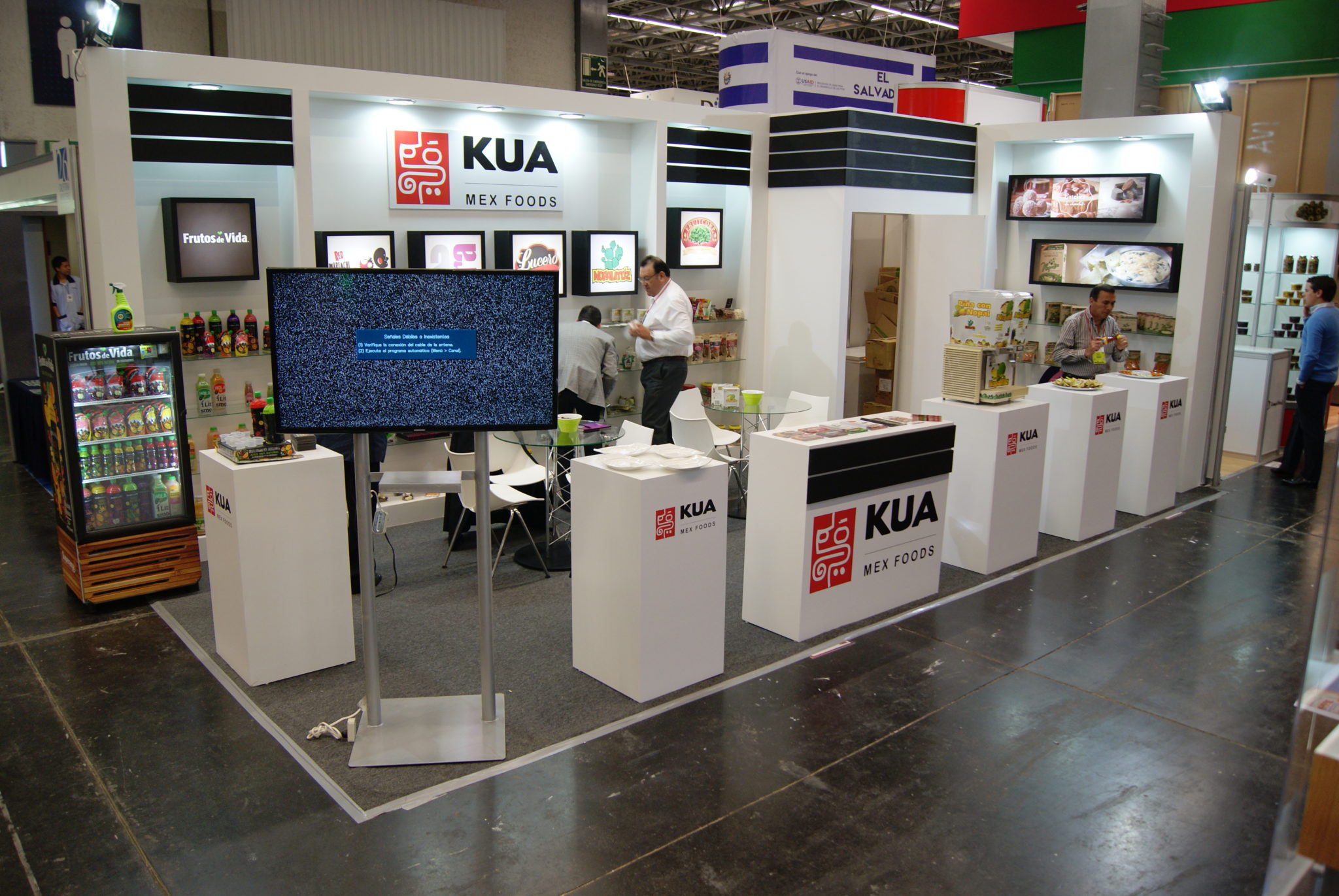One of the main requirements when starting a booth design is to know the available space, in order to adapt it to the services that participants want to exhibit in the most appropriate way.
Two of the most relevant factors when defining the booth size are the hall area where the event will be held and the budget you have. You sould always keep in mind the place capacity, because is useless to earmark large resources amount to install a booth with vast proportions if the site doesn’t allow it. Besides, you must consider the kind of event. Its duration, the product or service on exhibition and the number of people that will attend the visitors.
In fairs and expos that span several days is recommended the use of modular booths, also called “institutional”, as they are more versatile in terms of size and visual capacity. Using a modular booth is a great investment because of its great advantages as they are resistant, light and reusable. They consist of an anodized matt aluminum profile, wich protects it from oxidation.

Institutional Booths usually measure 3m long, 3m wide and 2.5 high, wich are the standard module measures in american events, however this kind of booths adapts to the required capacity, wich can be calculated by adding up the space occupied and the useful space.
The occupied space is the necessary one for the objects in the booth (showcases, booksellers, tables, chairs, products), while the useful space or open is the one available for the people circulation. In general, 9 square meters are require for each person attending the booth.
In order to know the ideal number of staff, it’s necessary to take into account the number of visitors who will attend the booth in the active hours (those where there are more visitants) and inactive hours, as well as the number of clients with whom you want to contact at the end of the event. On average, a salesperson can handle ten people in one hour, so if you want to reach 300 people a day in 10 hours, three vendors will be needed. If you consider the minimum free square meters per person. You get a total of 27 square meters.
 ENGLISH
ENGLISH
